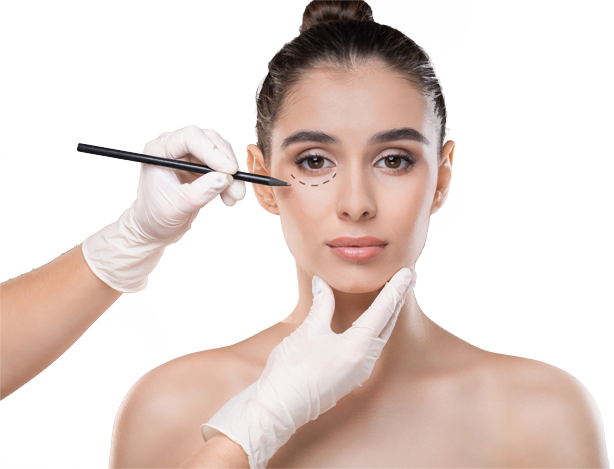
The jawline is an important area that directly affects gender perception and expression on the face. Facial expression is one of the most powerful areas of a person’s identity and expression of existence. For trans women undergoing gender transition, changes in facial features are not just about appearance. This change is also a way to feel more secure within society. At this point, the overall appearance of the jawline and how it determines gender expression requires a detailed evaluation.
So, what exactly does jawline surgery aim to achieve? What anatomical differences are taken into account? Is it just an aesthetic change, or does it also have a psychological aspect? In this article, you will find answers to all these questions and better understand why jawline feminization is a critical step for many trans women.
Table of Contents
Why Is the Jawline So Important for Trans Women?
The jawline, which surrounds the face, plays a significant role in gender expression. A sharp, bony, and prominent jawline can make individuals appear more masculine than they are. Trans women, in particular, do not want this appearance. For a more feminine face, this line should be narrower, rounder, and softer. These differences can directly affect whether a person’s face is perceived as “masculine” or “feminine.”
In society, a “feminine” face is described as more delicate, slender, and with softer transitions, and aesthetic surgery is shaped within this framework. For this reason, jawline surgery (jawline feminization) is considered one of the most fundamental surgical procedures for trans women to achieve a more feminine appearance.
What Procedures Are Not Included in Jawline Feminization?
Jawline surgery is usually performed as part of facial feminization surgery (FFS) and involves a wide range of surgical approaches. This surgery is generally combined with one or more of the following procedures:
- Mandibular Angle Reduction:
The outwardly prominent corners of the lower jaw are shaved down to achieve a narrower, more oval shape. - Chin Reduction:
If the chin is wide, protruding, or long, it is reshaped to be in proportion with the rest of the face. - Masseter Muscle Reduction:
In some cases, the jawline may appear thick due to muscle development. These muscles are reduced using Botox or surgical methods to achieve a more feminine appearance. - Soft Tissue Recontouring:
In addition to the bone structure, the tissues beneath the skin are also reshaped to soften the facial contours.
Jawline Surgery: More Than Just Aesthetics
While many people seek jawline surgery as a purely “cosmetic” change, for trans women it has a much broader and more significant meaning. Because:
- The risk of misgendering in society is reduced.
- Self-confidence, self-compassion, and self-worth increase. This means living a more peaceful life with one’s body.
- Seeing a familiar face in the mirror supports mental health. Mental healing and change are important details that improve a person’s quality of life as much as physical change.
- Social anxiety and feelings of dysphoria may decrease. This allows the person to feel more secure and comfortable in their social life.
For this reason, jawline surgery is particularly meaningful for trans women and contributes to a psychological healing process. This surgery is one of the concrete steps toward “feeling complete” for many trans women.
What Steps Are Taken Before Jawline Surgery?
It is not possible to talk about a standard procedure in facial aesthetic surgery. Therefore, instead of a standard procedure that applies to everyone, a personalized plan is made for jawline surgery. Dr. MFO considers the following before surgery:
:
- Considers the existing bone structure
- Skin thickness
- Facial symmetry
- Aesthetic expectations
- The effects of hormonal changes on the face
to create a plan focused on the individual’s goals. In some cases, jaw implants may be recommended, while in others, simply shaving may be sufficient.
What is the Recovery Process Like?
Jawline surgery is usually performed under general anesthesia. This surgery takes an average of 2-4 hours. After surgery:
- Hospital rest may be required for 1-2 days,
- Some temporary side effects such as swelling and bruising may be seen in the first weeks,
- Normal life can be resumed within 2-3 weeks,
- Final results become visible within 3 to 6 months.
Following the surgeon’s recommendations during the post-operative period—such as sleeping with the head elevated, applying cold compresses, and regularly taking the medications prescribed by the doctor—can accelerate the healing process and prevent potential complications.
The 3 Most Popular Jawline Surgeries for Trans Women
So, which jawline-focused surgeries are most popular for trans women?
- Chin Contouring
Chin contouring is a procedure that removes excess bone protrusions to give the chin a rounder and more refined shape. This method softens a square or pointed chin structure when viewed from the front, giving the lower part of the face a more feminine appearance. The effective changes after surgery are among the most commonly performed procedures for transgender women.
Advantage: It provides natural results without disrupting the proportions of the face.
Who is it suitable for? Transgender women with a masculine bone structure and a wide chin. - Chin Implant Shaping
In some cases, reshaping is necessary to achieve the feminine appearance that trans women desire. Chin implants create a more elegant and elongated appearance by providing balance in the lower part of the face, especially in individuals with a weak jawline.
Advantage: It can increase chin projection and define the neckline.
Who is it suitable for? Trans women with a receding jawline or who desire a softer facial profile. - Jaw Shaving (Lower Jawbone Shaving)
Jaw shaving is a procedure that reduces the width of the face by shaving the sides of the lower jawbone. This operation creates a feminine structure by softening square or angular facial features.
Advantage: Creates a slimmer jawline in both the side profile and front view.
Who is it suitable for? Trans women with a prominent, wide, or angular lower jawbone.
Jawline Surgery Can Enhance Your Femininity

For trans women, jawline surgery plays a significant role in the journey of aligning their external appearance with their internal identity. This is because the jawline is a crucial area that influences gender perception. For trans women, achieving an ideal jawline is more than just a technical procedure; it is also a way of affirming their identity. In this process, Dr. MFO prioritizes planning jawline surgeries in a way that best aligns with patients’ expectations.
Jawline surgery may be the intervention you’re seeking to both satisfy your femininity and make it more striking. Take action to feel the difference of a stronger, more unique, and most importantly, feminine touch.
We hope that this article has provided you with useful information and solutions to your problems, and has inspired you to pursue your dreams and goals. If you have any questions, comments, or feedback, please feel free to contact us or leave a comment below. We would love to hear from you and to help you in any way we can. Thank you for reading and have a wonderful day!Follow our blog for more. You can also reach us on our contact page for any questions you may have. Ffs center is an LGBT community friendly organization.

